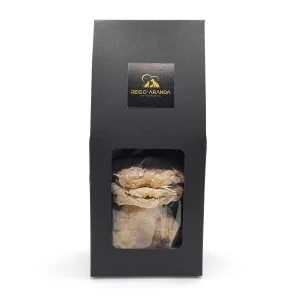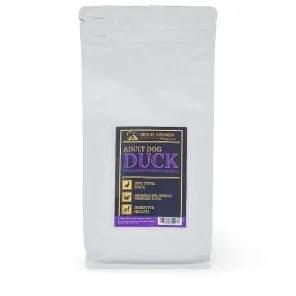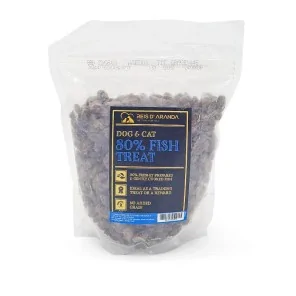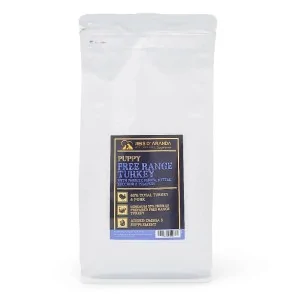Its name says it all: the Vienna blue rabbit comes from Austria. Not only is it beautiful with its shiny blue-grey...
THE MEDIUM SCHNAUZER
INTRODUCTION
The Standard Schnauzer or Medium Schnauzer is the medium-sized version of the German Schnauzer breed of dog. Being the first to exist of the three varieties of Schnauzer, and despite its coat and general appearance, it is not related to English terriers.
THE ORIGIN OF THE MEDIUM SCHNAUZER
The name schnauzer derives precisely from the trait just mentioned (in German, ‘schnauz’ means moustache). In its early days, the schnauzer started out as a stable dog in the Munich area of Germany due to its affinity with horses, where it showed great dedication in eliminating rodents.
Other theories suggest that this breed is the result of a cross between spitz dogs and guard dogs. Although nowadays its role is that of a companion dog, the Schnauzer still retains its abilities as a cattle dog. It has a great capacity to learn and can be trained as a retriever both on land and in water.
Iván Díaz, breeder of Tierras de Breogán (Lugo), points out that the medium schnauzer is the original breed (you can consult the breed standard of the Spanish Schnauzer and Pinscher Club), while the giant schnauzer and the miniature schnauzer are two separate breeds that emerged around 1880 from the medium. The miniature was obtained through induced dwarfing practices (reduction of puppy food), while the giant was developed through crosses with the German Pug and the Flanders Cattle Dog.
THE STANDARD OF THE MEDIUM SCHNAUZER
GENERAL APPEARANCE: Medium size, vigorous, more compact than lean, harsh coat.
IMPORTANT PROPORTIONS:
- Square build, where the height at the withers corresponds more or less to the length of the body.
- The length of the head (from the tip of the nose to the occipital protuberance) is related to the length of the body (measured from the withers to the insertion of the tail) approximately in a ratio of 1:2.
HEAD
CRANIAL REGION:
SKULL: Strong and elongated, with the occiput not very pronounced. The head should correspond to the general strength of the dog. The forehead is flat and parallel to the bridge of nose, without wrinkles.
STOP: Well differentiated between the eyebrows.
FACIAL REGION:
TRUFFLE: Well developed with well opened nostrils. Always black.
HOCIO: Ending in the shape of a truncated wedge. The nasal bridge is straight.
BELLY: Black, resting firm and flat on the jaws; the corners of the mouth are closed.
JAWS / TEETH: Upper and lower jaw powerful. The bite is scissor bite, strong and complete (42 teeth clean and white according to the dog's dental formula). Should close well. The chewing musculature is strongly developed without, however, exaggerated cheeks spoiling the straight appearance of the head (with beard).
EYES: Medium size, oval, turned forward, dark, with lively expression. Eyelids close fitting.
EARS: Folded and drooping, set on high, V-shaped, the inner edges of the ears resting on the cheeks. The carriage of the ears is symmetrical.
They are set forward towards the temples. The parallel fold must not extend beyond the upper line of the skull.
NECK: The nape of the neck is strong, muscular and held arched. The neck slopes harmoniously towards the withers. Strongly set, narrow, with noble carriage, contributing to the powerful and elegant appearance. The skin of the throat is close fitting and without dewlap.
BODY
topline : Sloping slightly from the withers towards the rear.
CROSS: The highest point of the topline.
BACK: Strong, short, firm.
LOIN: Short, strong, deep. The distance from the last rib to the hip is short so that the dog appears compact.
Croup: Slightly rounded, passing imperceptibly over the set on of the tail.
CHEST: Moderately broad, oval in shape, deep to the elbows. The forechest is especially marked by the point of the sternum.
BOTTOM LINE: Flanks not too tucked up so as to give a nice wavy line to the underside of the ribcage.
TAIL: Natural, the aim being to achieve a sabre or sickle shape.
LIMBS :
FOREQUARTERS: Seen from the front, the forelegs are strong, straight and not too close together. The forearms seen from the side are straight.
Shoulder: The shoulder blade is firmly laid back against the ribcage. Well muscled on both sides of the spine of the bone, protruding over the vertebrae of the spine in the thoracic region.
As sloping and well laid back as possible, forming an angle of 50° to the horizontal.
ARM: Close to the body, strong and muscular, forming an angle of approximately 95° to 105° to the shoulder blade.
ELBOW: Close fitting, turning neither in nor out.
FOREARM: Straight when viewed from all sides, strongly developed and well muscled.
BODY: Strong and stable. Its structure hardly stands out from that of the forearm.
Pastern: Straight when viewed from the front, slightly oblique in profile to the ground, strong and slightly springy.
HANDS: Short and round; fingers tightly knit and arched (cat feet); short, dark nails and strong pads.
HINDQUARTERS: Seen in profile obliquely; from behind, parallel and not too close together.
Upper thigh: Moderately long, broad and strongly muscled.
KNEES: Turned neither in nor out.
LEG: Long and strong, sinewy, continuing into a powerful hock.
Hock: Well angulated, strong, firm, turning neither in nor out.
METATARSE: Short and perpendicular to the ground.
FEET:Toes short, arched and tight to each other; nails short and black.
GAIT / MOVEMENT: Springy, elegant, agile, free and with good ground coverage. The forelegs are stretched as far forward as possible and the hind legs - with good springy reach - give the necessary drive. The foreleg on one side and the hindlegs on the other side move simultaneously forward. Back, ligaments and joints are firm.
SKIN: Tight all over the body.
HAIR: The coat should be harsh, wiry and dense. It is composed of a dense undercoat and an outer coat (which can never be too short) of hard, close lying hairs all over the body. The coat of the outer coat is coarse, of sufficient length to be able to check its texture, neither bristly nor wavy.
The coat on the limbs tends not to be so harsh. On the forehead and ears it is short. Typical features are, on the muzzle, the beard, which should not be too soft, and the bushy eyebrows shading the eyes.
COLOUR:
- PURE BLACK (black undercoat).
- SALT AND PEPPER: For the salt and pepper the aim of breeding is to obtain a medium tone with even distribution of well pigmented pepper colour with grey undercoat. Shades ranging from dark steely grey to silver grey are permissible. All colours should have a dark mask which underlines the expression and is in harmony with the colour of the respective shade. White patches on the head, chest or limbs are not desired.
SIZE AND WEIGHT
HEIGHT AT WITHERS
- MALES AND FEMALES: From 45 to 50 cm.
WEIGHT
- MALES AND FEMALES: From 14 to 20 kg.
FAULTS: Any departure from the foregoing points should be considered a fault and the seriousness with which the fault should be regarded should be in exact proportion to its degree and its effect upon the health and welfare of the dog.
In particular:
- Head too small or too short as a whole.
- Heavy or round skull.
- Wrinkles on the forehead.
- Short, pointed or narrow muzzle.
- Pincer bite.
- Eyes light, too large or too round.
- Low set or very long ears, ears carried differently from each other.
- Cheeks or cheek bones too pronounced.
- Loose throat skin, dewlap.
- Narrow neck.
- Back too long, tucked up or soft.
- Carried too long, tucked up or soft.
- Drooping croup.
- Tail turned towards the head.
- Long feet.
- Pitch of ambling.
- Coat too short, too long, soft, wavy, wavy, tufted, silky, white or spotted or mixed colours.
- Brown undercoat. In salt and pepper: black eel line on the back or black saddle.
- 1 cm from the heights upwards or downwards.
SERIOUS FAULTS:
- Heavy or light appearance, short or patilargo.
- Inverted sexual characteristics (e.g. male female).
- Elbows turned outwards.
- Stiff or barrel-shaped hind legs.
- More than 1 cm and less than 3 cm in the limiting measurements upwards and downwards.
DISQUALIFYING FAULTS:
- Aggressiveness or extreme shyness.
- Any dog showing clear signs of physical or behavioural abnormalities.
- Maliciousness, exaggerated suspiciousness, nervous behaviour.
- Deformity of any kind.
- Lack of breed typicality.
- Faults in the bite such as undershot or overshot bite, deviated incisor arches.
- Gross faults in every region such as faults of construction, coat and colour.
- More than 3 cm in the limiting measurements upwards and downwards.
N.B.:
- Males should have two apparently normal appearing testicles fully descended into the scrotum.
- Only functionally and clinically healthy dogs with conformation.
HEALTH OF THE MEDIUM SCHNAUZER
The medium Schnauzer is generally a healthy dog, especially if the breeder carries out the relevant health tests before breeding and the owner keeps him in good condition by providing regular veterinary visits, quality food and grooming services when necessary. However, he may suffer from the following diseases:
- PANCREATITIS: The pancreas is a gland very closely linked to the digestive system and especially susceptible to inflammation in the Schnauzer dog. This is why pancreatitis is a relatively frequent problem in this dog, which can also become chronic and present various acute episodes throughout the animal's life.
- HEMORRHAGIC ENTERITIS: This is a disease that produces severe inflammation in the intestinal tract accompanied by haemorrhage. It usually appears when Schnauzers are between 2 and 4 years old, and manifests itself mainly through repeated diarrhoea and vomiting. The cause of this disease is not known, although it is thought to be the body's reaction to an intestinal allergy. It can be controlled with a specific diet prescribed by the veterinarian.
- HIP DYSPLASIA: Like the Poodle, the Schanuzer is also prone to this condition. Dysplasia is a malformation affecting the coxofemoral joint, which is the junction of the femur with the coccyx of the hip. Its main symptoms are reduced mobility, lameness and pain.
- EYE PROBLEMS: This breed is susceptible to eye problems. Usually it is cataracts or some atrophy or dystrophy, so we must monitor the animal's eyesight. Cataracts in Schnauzers are thought to be of genetic origin, and can sometimes lead to total blindness.
As far as the health of the coat is concerned, it should be brushed every day to avoid tangles and the groomer should be visited every six to eight weeks for stripping to manually remove all the ‘old’ hair and keep the skin healthy. Avoid bathing him at home to prevent the coat from softening, if it gets dirty it is best to use dry shampoo.
THE PERSONALITY OF THE MEDIUM SCHNAUZER
The medium schnauzer is active and lively. A happy and sociable breed and a great enthusiast for play.
He is affectionate, very loyal and protective, and although he can have an independent side, he forms strong bonds with his loved ones, whom he likes to keep close. He can sometimes have jealous behaviour.
Very intelligent, willful, determined and tenacious. His training is relatively easy if done firmly but gently and with some experience, as he can sometimes show a stubborn disposition. He responds very well to training with positive reinforcement. His facility for learning can also cause him to get bored quickly if the same things are repeated too much.
His cheerful and playful temperament predisposes him positively in his relations with children, with whom he will enjoy a lot and like to share funny moments. But he needs to be accustomed to interactions from puppyhood and supervised to ensure that everything flows smoothly between the two parties.
The Schnauzer's territorial and somewhat dominant nature and hunting instinct can be a problem with other dogs and cause him to show a certain reserve towards other pets, especially those that are smaller.
It is essential to socialise him well from puppyhood so that he learns to respect other animals in coexistence and to relate properly to members of his own species.
CONCLUSION
As long as he can release the energy that helps to keep his temperament balanced, the medium Schnauzer will adapt to living either in a flat or in a large house with a garden or outside yard.
As a first dog he can be a challenge for inexperienced people, because of his somewhat stubborn and dominant character. But it is also a cheerful and noble dog and as such is suitable for people of all ages and for families of all kinds. Of course, before deciding on the breed you must be willing to give him the attention, care and daily exercise he will need to feel well. As well as committing to educate and socialise him early, so that he learns limits, to obey and to establish healthy relationships.
Leave a comment
Log in to post comments
















